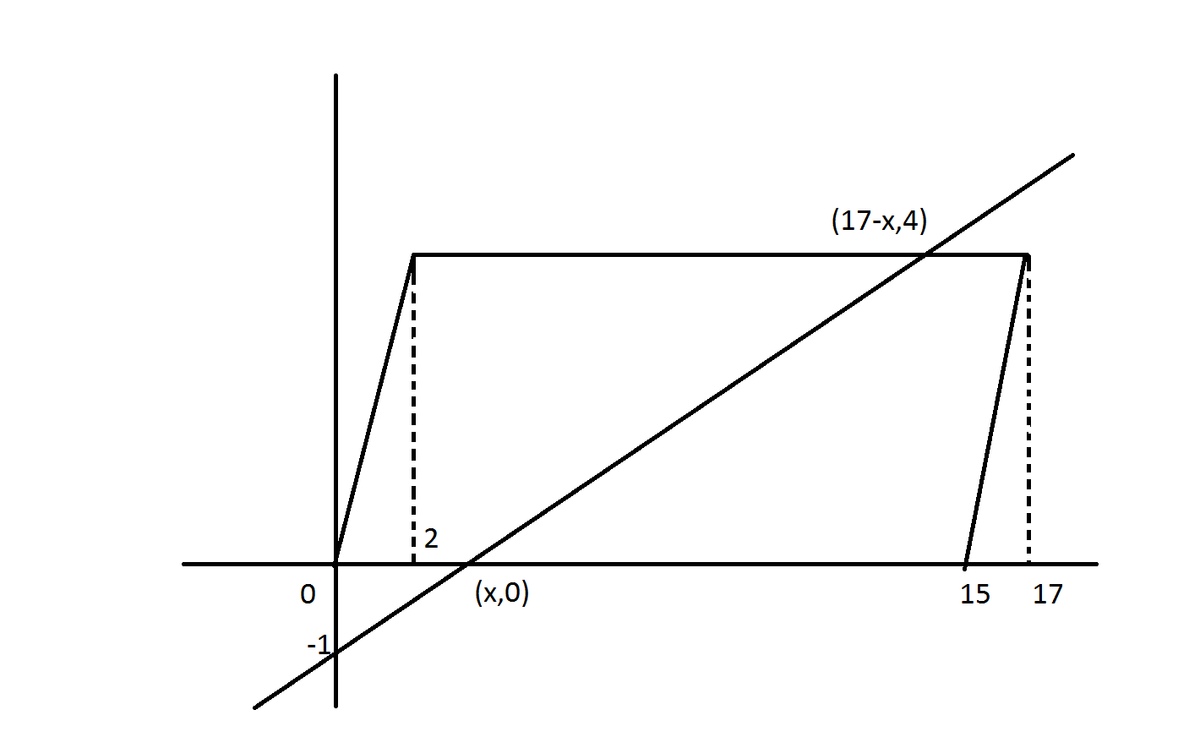Bisecting a Parallelogram
Let , , and . Then is a parallelogram. A line through the point divides the parallelogram into two regions of equal area. The slope of this line can be written as where and are positive coprime integers. Find .
The answer is 23.
This section requires Javascript.
You are seeing this because something didn't load right. We suggest you, (a) try
refreshing the page, (b) enabling javascript if it is disabled on your browser and,
finally, (c)
loading the
non-javascript version of this page
. We're sorry about the hassle.

As we increase the slope of the line through our point ( 0 , − 1 ) , the area inside the parallelogram below our line increases. There will be a unique slope for which the area below the line is exactly half of the area in the parallelogram. When our line passes through the point of intersection of the diagonals of the parallelogram, our line will bisect the area of the parallelogram because it will divide the parallelogram into two congruent trapeziums.
The intersection of the diagonals is the point ( 2 1 7 , 2 ) , so the slope of our bisecting line must be 2 1 7 − 0 2 − ( − 1 ) = 1 7 6 . Therefore, a + b = 6 + 1 7 = 2 3 .